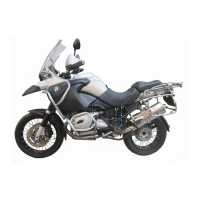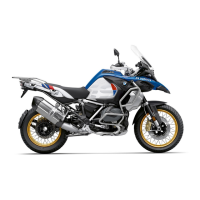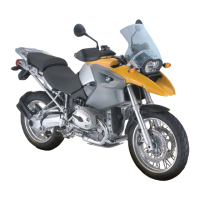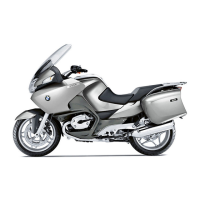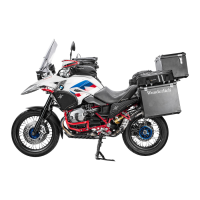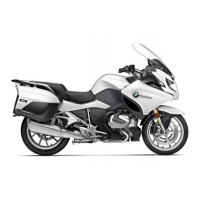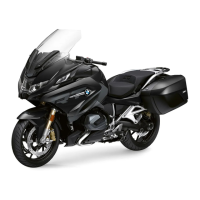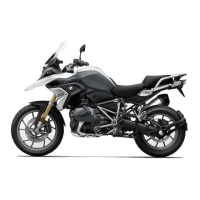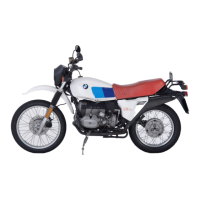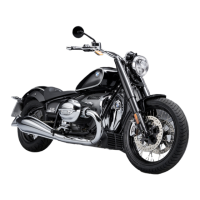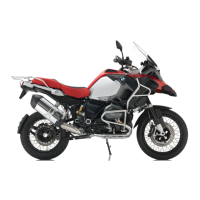
Do you have a question about the BMW Motorrad R 1200GS Adventure 2016 and is the answer not in the manual?
| Displacement | 1170 cc |
|---|---|
| Bore x Stroke | 101 mm x 73 mm |
| Torque | 125 Nm at 6, 500 rpm |
| Compression Ratio | 12.5 : 1 |
| Fuel System | Electronic fuel injection |
| Rear Brakes | Single disc brake, diameter 276 mm, double-piston floating caliper |
| Wheelbase | 1, 510 mm |
| Dry Weight | 260 kg |
| Fuel Capacity | 30 liters |
| Tires Front | 120/70 R19 |
| Tires Rear | 170/60 R17 |
| Final drive | Shaft drive |
| Power | 125 hp (92 kW) at 7, 750 rpm |
| Transmission | 6-speed |
| Frame | Two-section frame, load-bearing engine |
| Front Suspension | Telelever |
| Rear Suspension | Paralever |
| Front Brakes | Dual disc, 305 mm |
| ABS | BMW Motorrad Integral ABS (partly integral) |
| Gearbox | Constant mesh |
| Seat Height | 890/910 mm (standard seat, low seat: 860/880 mm, high seat: 920/940 mm) |
Explains the purpose and structure of the rider's manual for quick orientation.
Defines common abbreviations and warning symbols used throughout the manual.
Details on custom equipment options available for the motorcycle.
Provides general specifications and dimensions for the motorcycle.
Notes on potential variations due to ongoing development and country-specific differences.
Illustrated overview of the motorcycle's left side components.
Illustrated overview of the motorcycle's right side components.
Details of components located underneath the seat.
Explanation of the controls on the left handlebar switch.
Explanation of the controls on the right handlebar switch.
Overview of the motorcycle's instrument cluster and its indicators.
Explains the function of various indicator and warning lights on the display.
Details on the various displays and information shown on the multifunction display.
Identifies and explains warning symbols shown on the display panel.
General overview of warning lights and their meanings.
Information regarding service reminders and intervals.
Details on the fuel reserve indicator and its functionality.
Explains how to check and interpret the engine oil level.
Information on the outside temperature display and ice warnings.
Information on tire pressure monitoring and warnings.
Explains the upshift recommendation feature and its display.
How to lock the handlebars and operate the ignition.
Operating the ignition system without a physical key.
Function and operation of the emergency on/off switch.
Details on operating headlights, parking lights, and flashers.
How to operate the hazard warning lights.
Operation of the left and right turn indicators.
Selecting and changing display readings.
Information on ABS functionality and control.
Details on ASC system operation and control.
How to adjust the electronic suspension system.
Selecting and using different riding modes.
Operation and settings for the cruise control system.
Activation and settings for the anti-theft alarm system.
Operation and adjustment of heated handlebar grips.
Procedures for removing and installing seats.
How to open, lock, and use storage compartments.
Instructions for adjusting mirrors and mirror arms.
Information on headlamp range and spring preload adjustment.
How to adjust the windshield height.
Adjusting the clutch lever.
Adjusting the handbrake lever.
Adjusting the shift lever.
Information on adjustable handlebars.
Setting spring preload for the rear wheel.
Adjusting damping characteristics for the rear wheel.
Crucial safety advice for riders, including equipment and riding conditions.
Warnings and advice regarding reduced ground clearance.
Guidance on proper loading and its effect on stability.
Restrictions on speed when using studded or winter tires.
Factors affecting motorcycle handling at high speeds.
Hazards associated with exhaust fumes.
Warnings about hot engine and exhaust system.
Information on catalytic converter protection and misfire issues.
Warning against unauthorized modifications.
Routine checks before riding.
Specific pre-ride checks to perform.
Checks to perform at every third refueling stop.
Procedures for starting the engine.
Detailed explanation of the pre-ride check sequence.
How the ABS system performs self-diagnosis.
How the ASC system performs self-diagnosis.
Guidelines for breaking in the new motorcycle engine.
Information on new tires and their break-in procedure.
Importance of running in new brake pads.
Recommendations for after off-road riding.
Advice on adjusting tire pressure for off-road riding.
Riding on unpaved or dirty roads and braking advice.
Adjusting spring preload and damping for off-road riding.
Checking rims for damage after off-road riding.
Information about the Pro shift assistant.
Techniques for achieving the shortest possible braking distances.
Braking techniques for descending mountain passes.
Impact of moisture and dirt on brake performance.
Warnings about braking in curves and riding limits.
Limitations of ABS Pro and the possibility of falls.
How ABS Pro enhances safety on public roads.
Instructions for parking the motorcycle on side or center stands.
Fuel specifications and refueling procedures.
Securely attaching the motorcycle for transport.
General information about motorcycle technology.
Explanation of how ABS works and its design characteristics.
How riders experience ABS functionality.
The importance of regular maintenance for the brake system.
Using ABS features responsibly and not for careless riding.
Evolution of ABS to ABS Pro and its benefits.
How ABS Pro adjusts control based on inclination.
Benefits of ABS Pro for rider safety and performance.
Explanation of ASC functionality and design.
Conditions that may lead to automatic ASC deactivation.
Overview of riding modes and their impact on systems.
How throttle response varies across riding modes.
ABS behavior in different riding modes.
ASC system behavior and limitations.
How the tire pressure control system works.
Operation of the Tire Pressure Control system.
Information and benefits of the Pro shift assistant.
General advice on maintenance tasks and tools.
Contents and uses of the onboard toolkit.
Description of the optional service tool kit.
Instructions for mounting and using the front wheel stand.
How to check and top up engine oil.
Checking brake operation and pad thickness.
Checking clutch function.
Checking and topping up coolant level.
Checking tire pressure and tread depth.
Checking wheel rims for damage.
Tire recommendations and specifications.
Procedure for replacing the air cleaner element.
Replacing bulbs in headlights, parking lights, and indicators.
Procedures and precautions for jump-starting the motorcycle.
Battery maintenance and charging instructions.
Safety advice on using third-party accessories.
Connecting and using electrical devices via onboard sockets.
How to open, close, and remove cases.
Procedures for opening, closing, removing, and mounting topcases.
Securely fastening and operating the navigation device.
Recommended cleaning and care products.
Guidelines for washing the motorcycle safely.
How to clean plastics, chrome, radiator, and rubber parts.
Advice on cleaning and protecting the motorcycle's paint finish.
Applying protective wax for paint preservation.
Steps for storing the motorcycle properly.
Procedures for preparing the motorcycle after storage.
Common issues and their remedies for engine starting problems.
Torque specifications for various fasteners on the motorcycle.
Recommended fuel types and quantities.
Engine oil capacity, specification, and topping up.
Engine specifications like type, displacement, and bore.
Clutch design and specifications.
Transmission design and gear ratios.
Final drive type and gear ratio.
Frame design and identification locations.
Specifications for front and rear suspension systems.
Details on brake types, pad material, and disk thickness.
Tire combinations, rim sizes, and load indices.
Electrical system specifications including fuses and bulbs.
Specifications for the alarm system, including activation time.
Motorcycle dimensions and seat height specifications.
Vehicle curb weight, gross weight, and payload.
Motorcycle performance metrics like top speed.
Procedure for reporting safety defects to NHTSA and BMW.
Information about the global BMW Motorrad service network.
Details on roadside assistance and breakdown services.
Information on pre-delivery checks and service intervals.
Explanation of annual BMW service requirements.
Detailed schedule of maintenance tasks based on mileage and time.
Table for recording completed maintenance work.
Documentation related to the electronic immobilizer system.
Certification details for the Keyless Ride ID device.
Certification for the Tire Pressure Control system.
